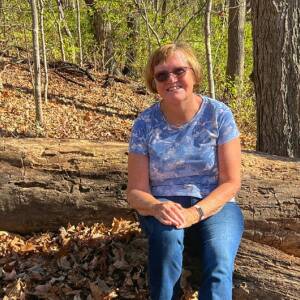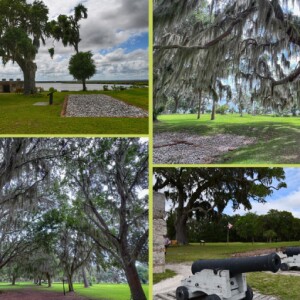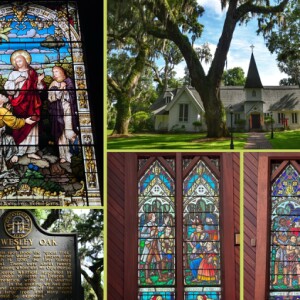St. Simon’s Island
Tuesday 21
Today we drove to St. Simons, the largest of the Golden Isles, a short hop across the water for a seagull, but almost 30 minutes by car! First we visited the Lighthouse museum. The current lighthouse and keepers dwelling were built in 1872 to replace the original lighthouse built in 1810, which was destroyed by Confederate forces in 1861 to prevent the beacon’s use by Federal troops during the Civil War. We first viewed an introductory film, then climbed the 129 steps to the top to enjoy the view, then looked around the lighthouse museum, housed in the Keepers dwelling, which includes period rooms and displays revealing the life of a lighthouse keeper. We then walked along the front to the fishing pier, and then looked for somewhere for lunch, to try some Georgian shrimp - nearby Brunswick on the mainland is the heart of Georgia’s shrimping industry.
In the afternoon we visited Fort Frederica National Monument and nearby Christ Church. (See extras) Fort Frederica was established by James Oglethorpe in 1736 to help protect the British colonies from the Spanish in Florida. In 1742 the battles of Bloody Marsh and Gully Hole Creek, Oglethorpe’s forces successfully repulsed Spanish attempts to invade the island. Afterwards, the Spanish no longer threatened the colony, and in 1749 the government disbanded the garrison. Subsequently the village fell into decline and by 1755 was largely abandoned. Using 18th century maps and journals as guides, however, archaeologists excavated sections of the fort and village, and by correlating the archaeological data with historic documents they were able to put together a good picture of Frederick’s past and colonial history. As you can see from my collage, it now forms a beautiful park against the backdrop of the magnificent live oaks draped with Spanish Moss.
Nearby Christ Church is likewise located in a serene setting formed by live oaks, holly and cedar trees. On this site, under the spreading oak trees, John and Charles Wesley preached before returning to England and later founding the Methodist church.



Comments
Sign in or get an account to comment.


